Peterborough United and Darren Ferguson have been closely intertwined for several years now. Sir Alex Ferguson’s son joined the East Midlands side towards the end of his playing career in 2007, joining on a player-coach deal, before retiring from his player duties in 2008. Between 2007 and 2009, the Scottish coach would lead Peterborough to consecutive promotions, taking them from League Two to the Championship.
A spell at Preston North End began and ended in 2010, before re-joining Peterborough in 2011, taking them back into the Championship after they had fallen out of the division whilst Ferguson had been gone. They would stay in the division for a year, but they would ultimately land back in England’s third division, and they have been there since. A 3-0 defeat to fierce rivals MK Dons in 2015 saw Ferguson get the sack, to seemingly end an era.
Ferguson would stay in the area, managing Doncaster and orchestrating another promotion, this time from League Two in League One. He would resign in 2018, and his stock was the lowest it had been since Preston. Darragh MacAnthony, Peterborough’s vocal chairman, took a risk in re-appointing Ferguson for a third time, in hopes that he could finally earn promotion back in the Championship’s, after years of flirting with promotion.
In this tactical analysis, we are going to cover Ferguson’s tactics this season, how they have adapted over time and an analysis of some of his key players.
The 3-4-1-2 (+ others) formation and system
Peterborough, this season, have adapted their system in each game to the needs of their opponent. They have used a variety of formations, but they have primarily rotated between a 3-4-1-2, 4-2-3-1, and 3-4-3. In-game that they expect to be stretched in wide areas, such as one of their recent matches versus Oxford, they will use a 4-2-3-1, which necessitates an extra man in defence, and uses full-backs rather than wing-backs.
This analysis will take a look at each of those three formations, but largely the 3-4-1-2, as this is the most frequently used formation. Possession this term has ranged from 36% to 68% to make for an average of 52% across the course of the season. And the formation does not exactly necessitate an increase in possession – there is no direct correlation between formation and possession – rather Ferguson focuses on the opposition to dictate their style of play.
In a back three, Nathan Thompson, typically a right-back, will divert away from his centre-back position, and provide a platform for ball progression higher up the pitch:
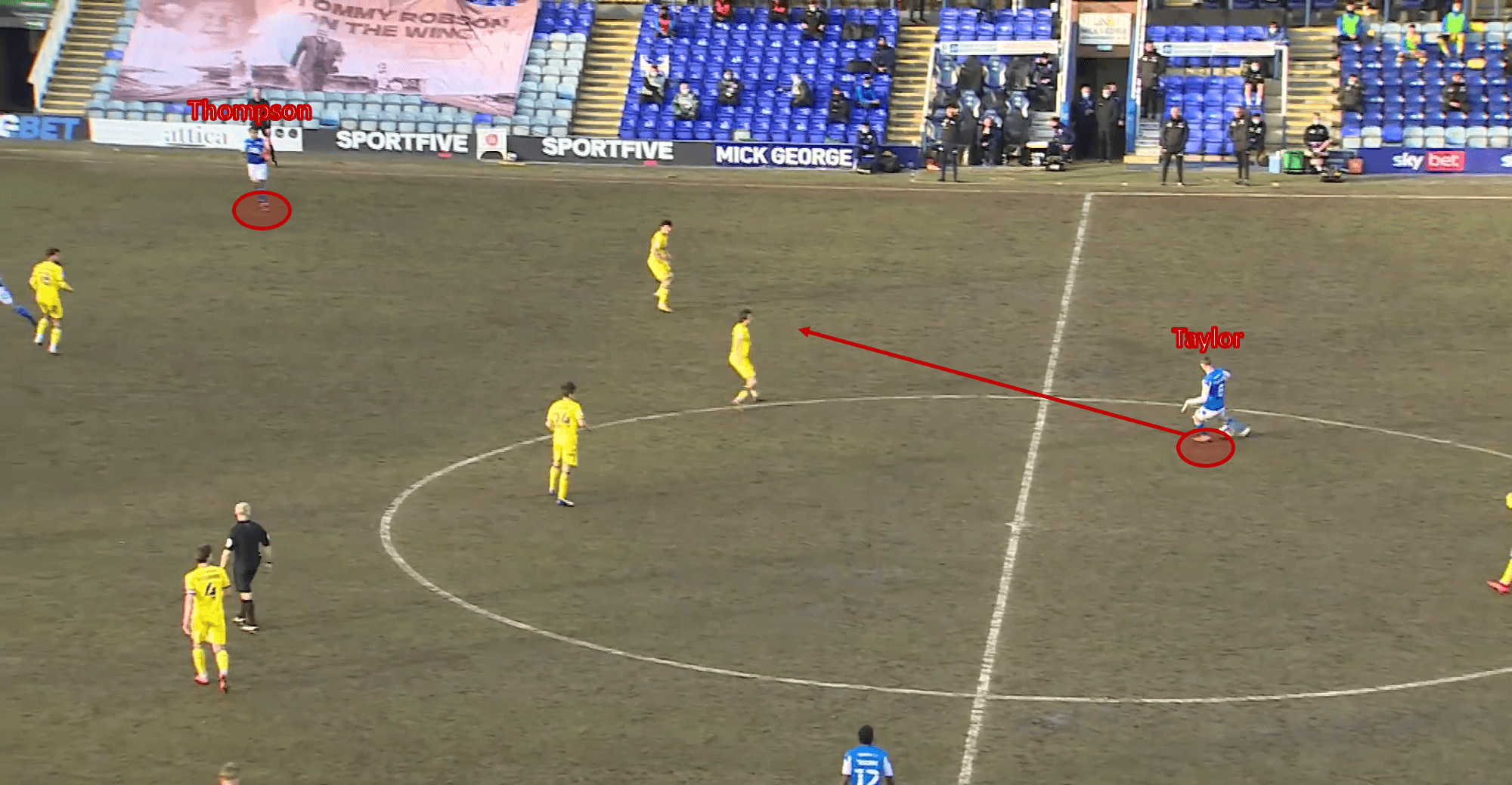
Jack Taylor in midfield sprays the pass out wide to Thompson in an advanced position, roaming from centre-back.
Utilising three centre-backs, and especially Thompson who has also played in his nominal right-back position, Peterborough can play out from the back with vertical ground passes played into midfield. They will typically rotate possession around the defence to drag the opposition’s shape towards one side of the pitch, before quickly switching back towards the middle and finding one of the midfielders in a more advanced position.
They can also play a far more direct style of play as well, again, depending on the opponent. When they are either being pressed off the ball like they were recently against Oxford or if the opposition is operating a high defensive line which could be exploited by the pace and physicality of Peterborough’s attack. Siriki Dembélé provides the pace while Jonson Clarke-Harris positions himself smartly in the box in these moments, acting as a strong physical presence who can hold off opponents.
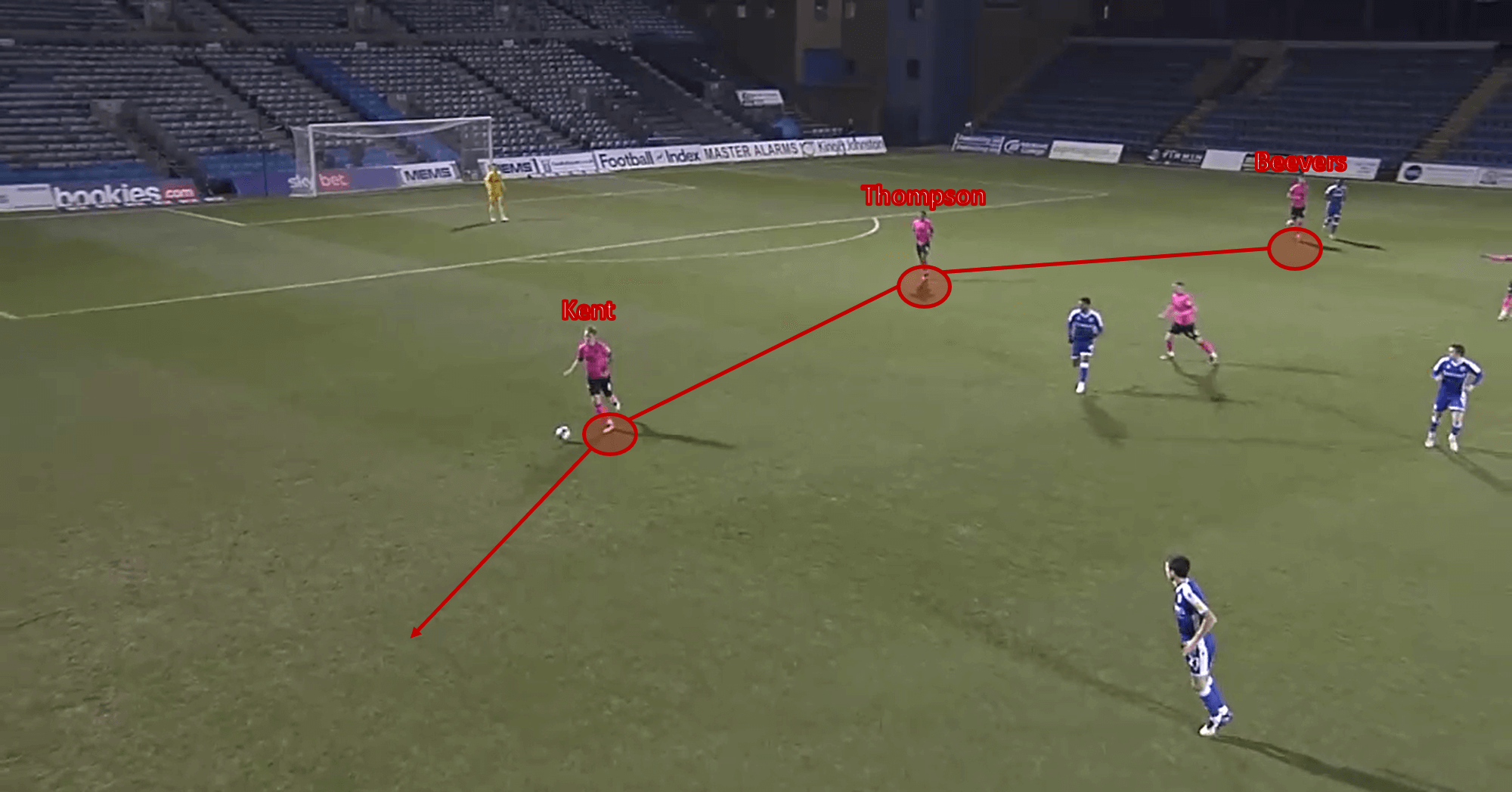
Here, we can see Peterborough’s back three, which is fairly wide in shape, and Kent, on the ball, looks to play the ball out wide to the wing-back.
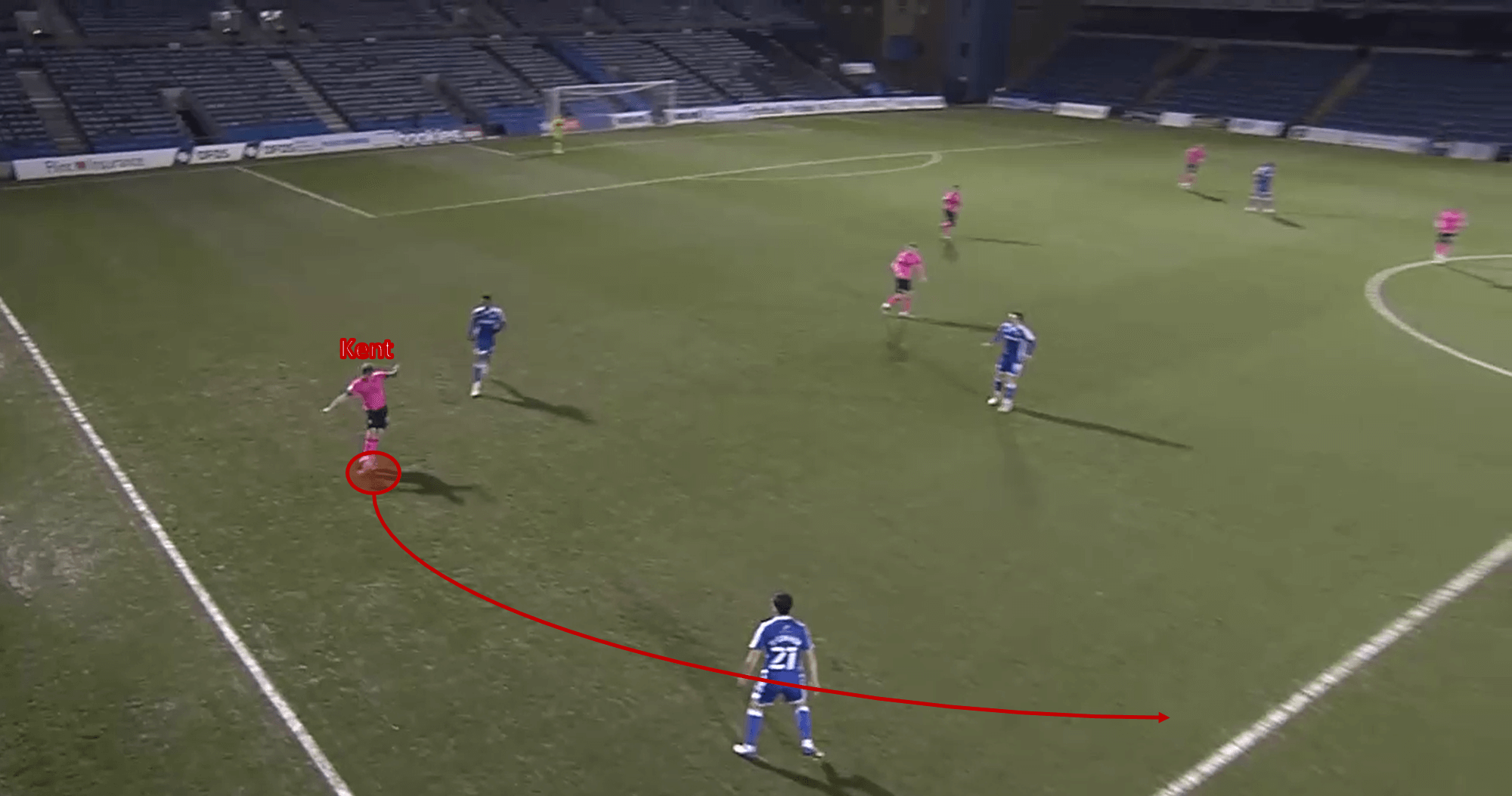
Only a few moments later, as the ball is rotated across the backline, plays the ball directly towards Clarke-Harris in the attacking unit.
However, much of Peterborough’s entries into the final third come via their wing-play – especially in their three-at-the-back systems – where Dan Butler and Joe Ward push up high in possession and look to get the ball into the penalty area. Butler, formerly of Portsmouth, is more adept at crossing from deep, where looks to find Clarke-Harris in the box with a lofted delivery, and the striker links up with Dembélé and Sammie Szmodics from there.
In Ward, Peterborough have a direct, attacking wide man who is more comfortable taking on his opponents one-on-one than Butler. He will more frequently produce cutbacks than Butler, making good use of his rapid speed to get near the byline. That, or he will make underlapping runs to get into the penalty area, where he can open up his body and take a shot on goal. He has a very good attacking output, Ward, contributing 13 goals and assists, compared to Butler’s five.
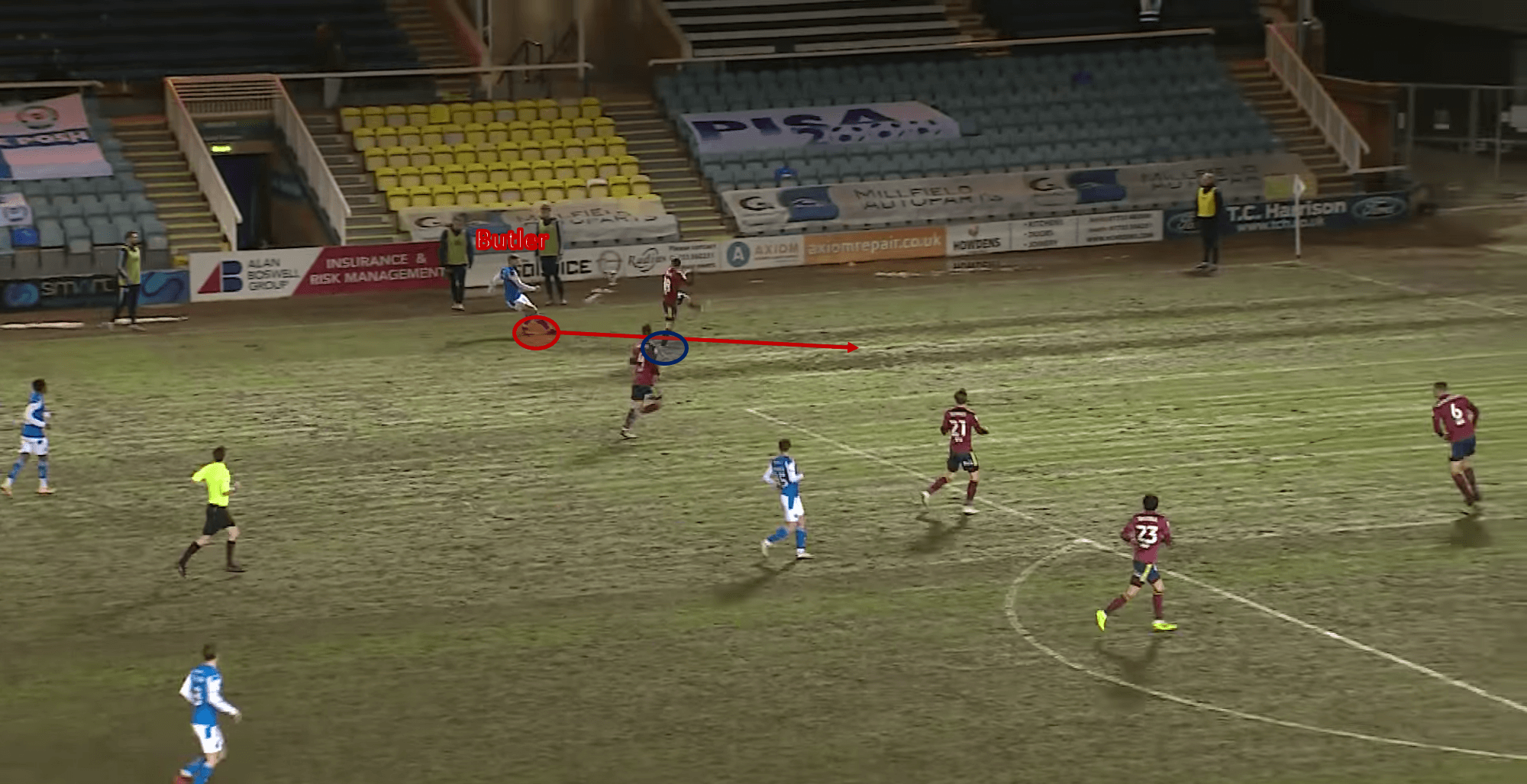
This is where Butler typically sends his crosses from. He does not have the greatest technique, but this lofted delivery finds Clarke-Harris in the box.
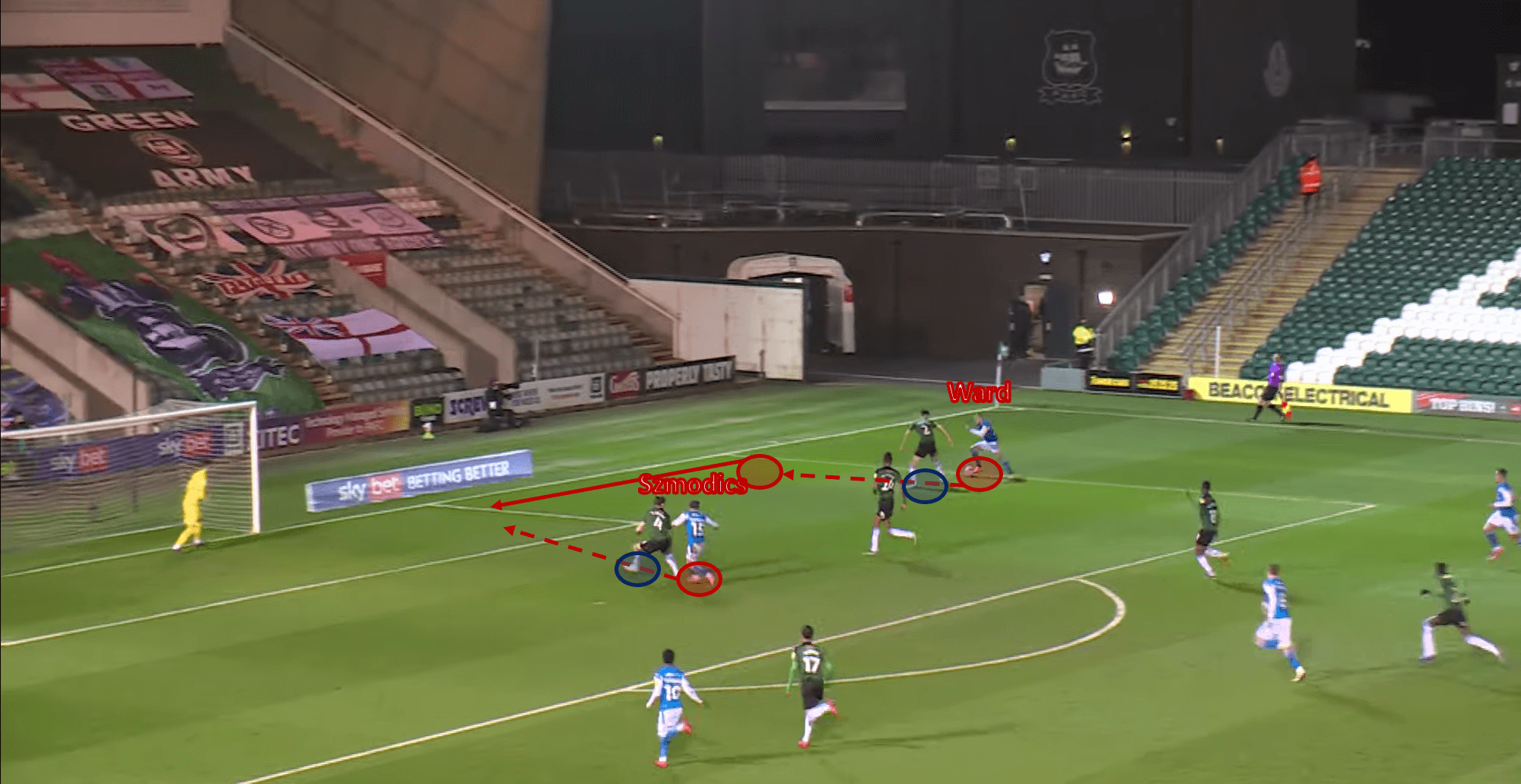
Ward produces the step-over to get towards the byline and find the path of Szmodics to score the goal.
In games where Peterborough are looking to protect their lead, typically away from home, their shape will change. Ferguson will often introduce two banks of four, and depending on which attackers are on the pitch, it can either become a 4-4-2 or 4-4-1-1. In these moments, Peterborough do press the opposition, but they are usually looking to cut off passing lanes, rather than press the ball carrier themselves. Their PPDA is the seventh-highest in the division, they can employ an aggressive press, but it is not their port of call.
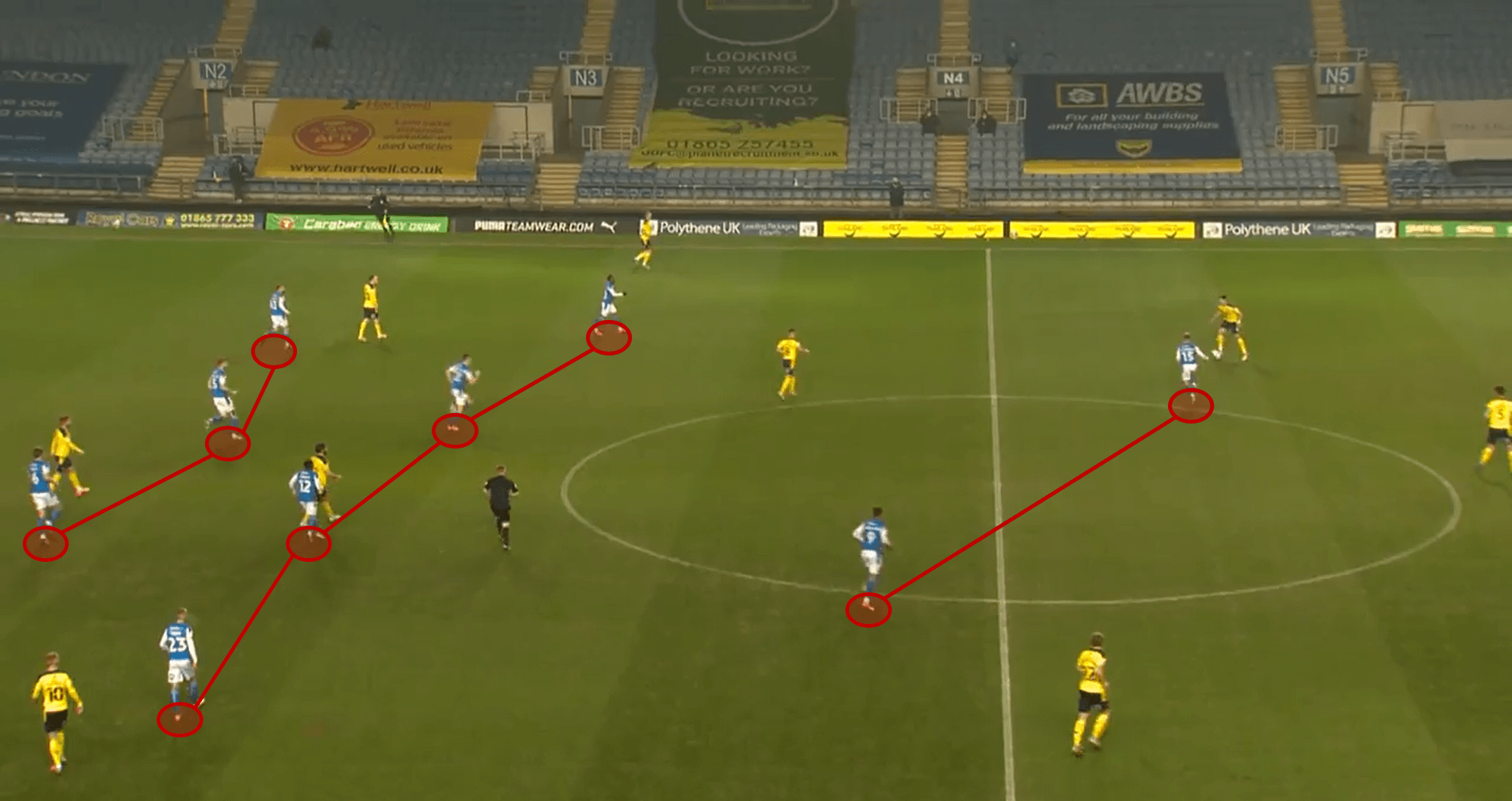
With Thompson off the screen, we can see Peterborough’s 4-4-2 out of possession, which worked well on the counter.
The double-pivot and its importance
One thing that remains consistent throughout all of Peterborough’s formations is their use of a double-pivot. The midfield partnership of Jack Taylor and Reece Brown has brought about a measured balance which has enabled Peterborough to transition defence into attack smoothly. Out of the two, Taylor is probably the more complete midfielder, who attacks and defends in equal measure. On top of 5 goal contributions, the midfielder has registered 4 tackles and interceptions per game.
They both largely play a facilitative role in Peterborough’s system. Either Taylor or Brown will pick up the ball in the midfield third and look to play simple one-twos with their respective wide players. Advancing further up the field, they both look to play through passes down the flanks or half-space, where one of the wide men can pick it up and deliver a cross into the box.
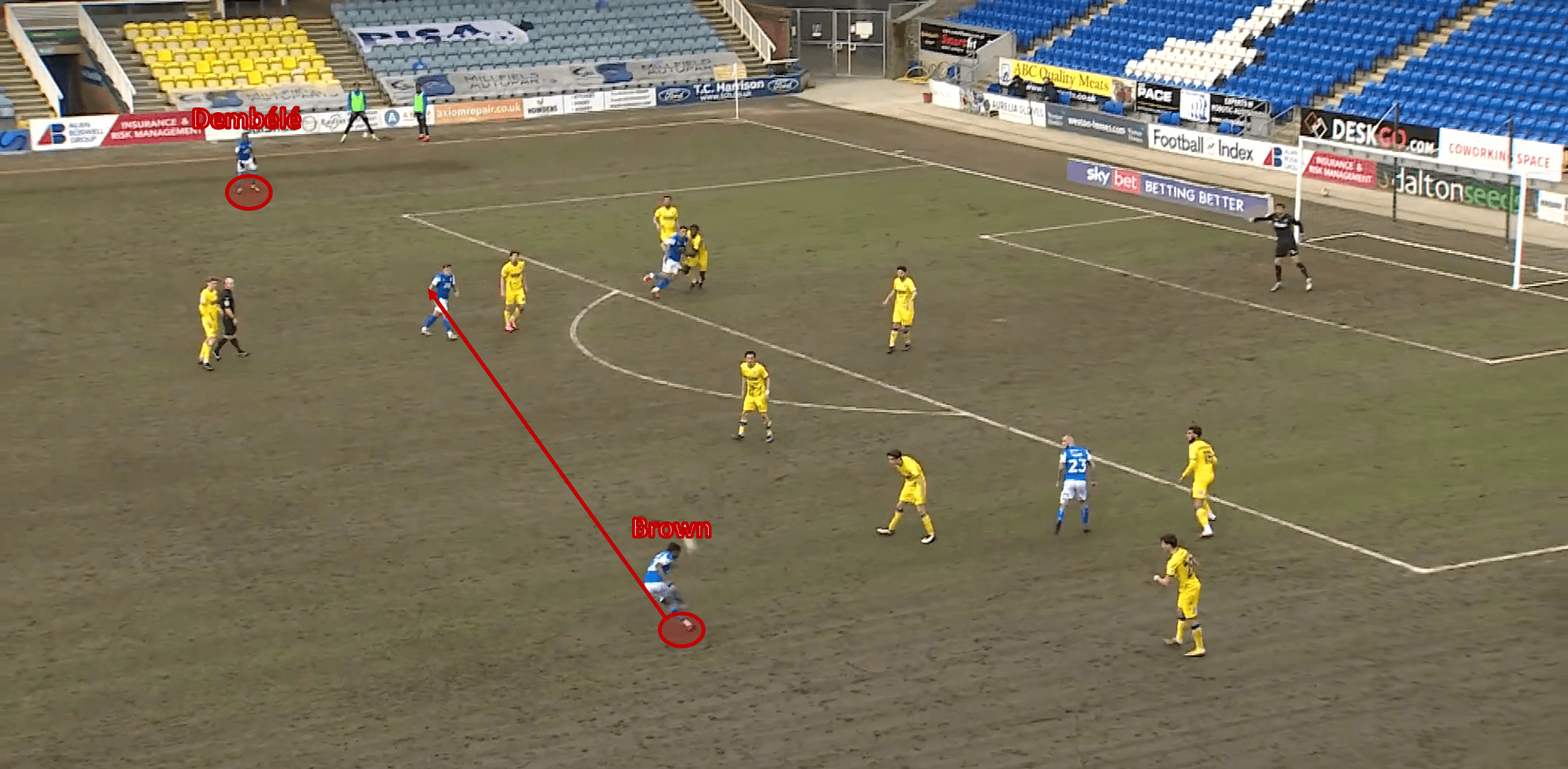
Brown on the ball in the final third, sprays a pass out wide to Dembélé in space, who can drive into the box with the ball.
This is the role they have taken up in the 3-4-1-2 at least since there are three defenders behind them, which can turn into five. This puts less of an emphasis on them to shield the defence than there is in a 4-2-3-1. In their 4-2-3-1, off the ball, Taylor and Brown are asked to shuttle across in front of the defensive line to both defend in wide areas and centrally too. This not only acts as protection for the back four but also instigates dangerous counterattacks.
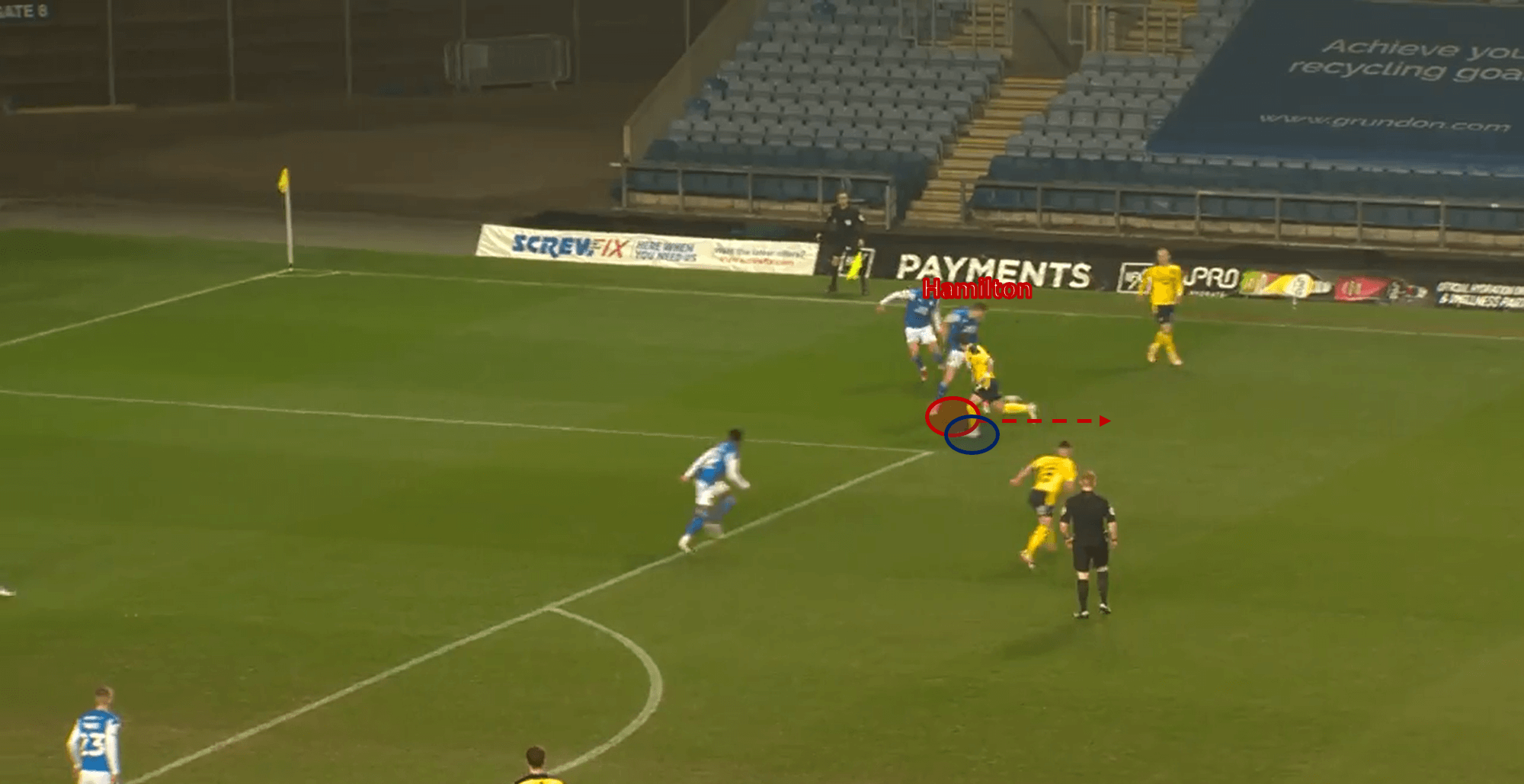
Hamilton, a former Manchester United player, versus Oxford, recovers the ball in the defensive third and drives with the ball up the pitch.
This has been key to Peterborough this season, meshing possession football with an effective and dangerous counterattack that starts in midfield with Taylor and Brown. They both do well to win the ball back in front of the defence and link up with their wide players via one-twos which help them advance up the pitch. Taylor, of the two, is more adept at playing the vertical ground passes into the attackers though.
Louis Reed, who has been a rotation player for Ferguson’s side this season, will often come on in the latter stages of the game to help keep possession ticking over in midfield. Labelled as ‘sideways Reed’ by some Posh fans, he does not do much to progress possession when he does enter the fray, but he has his uses whenever he does don the blue shirt.
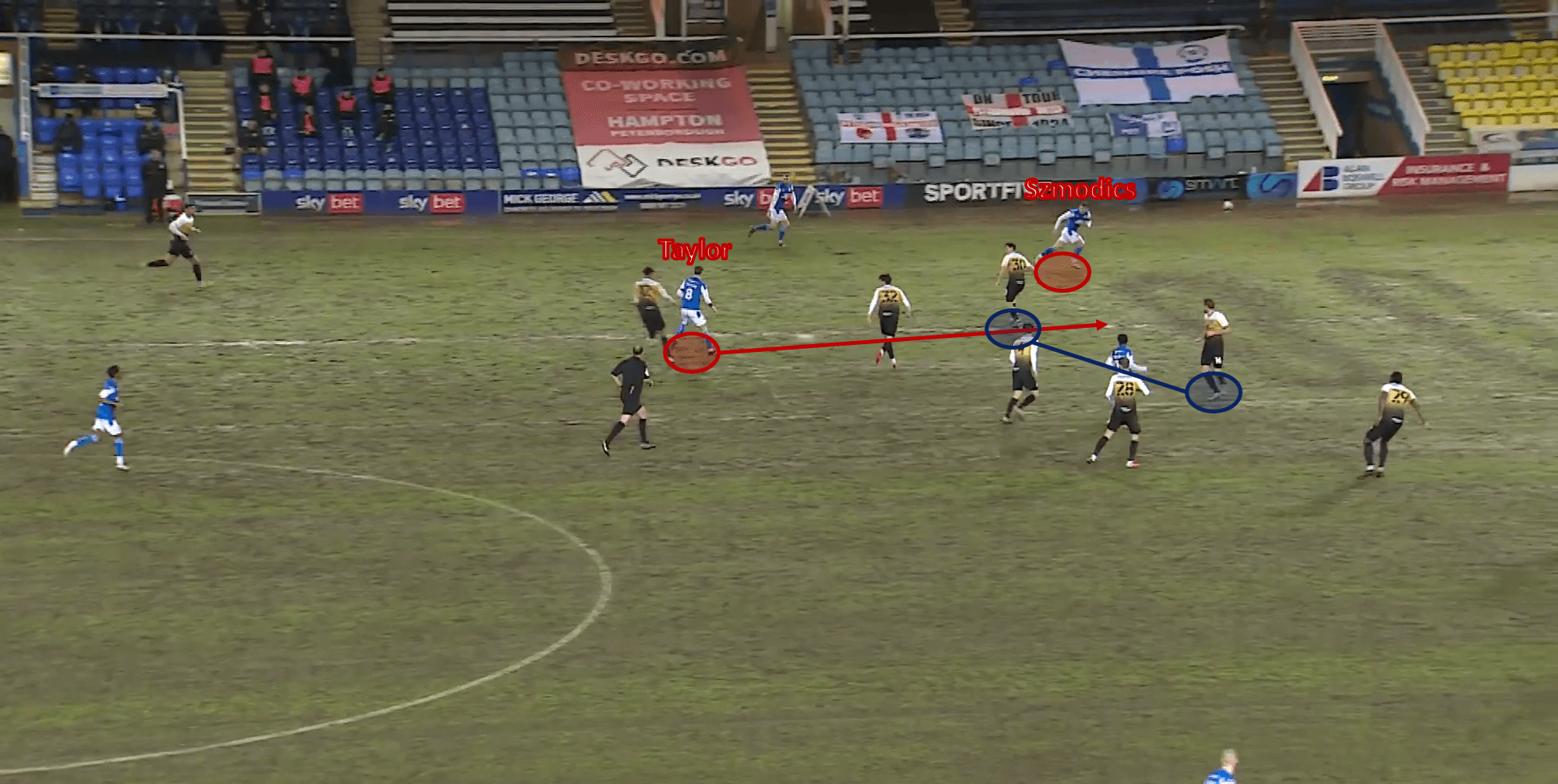
Taylor picks up the ball in midfield and plays a defence-splitting through pass to Szmodics down the half-space.
Ultimately the balance displayed by the midfield this season has been vital for Peterborough’s success. They have acted as a springboard for many of their attacks this season, and the team dearly miss Taylor especially when he is not available. Though, one criticism that could be labelled at them is that neither of them do enough in the final third, especially Brown, who is not especially creative or a goal threat. Though the balance they have achieved now will do well in League One, more might be expected of them in the Championship.
Szmodics, Dembélé, and Clarke-Harris – a lethal attack
Peterborough’s front three have all had their moments this season. While Clarke-Harris has been consistent all campaign, Dembélé started the season off on fire but has faltered off somewhat as the season has progressed, and Szmodics really struggled at the start but has regained some form now. They each have their own unique skill sets which complement one another quite nicely, and they have formed a truly lethal attack this season. They are the main reason why Peterborough have overperformed their xG by 7.7 this term.
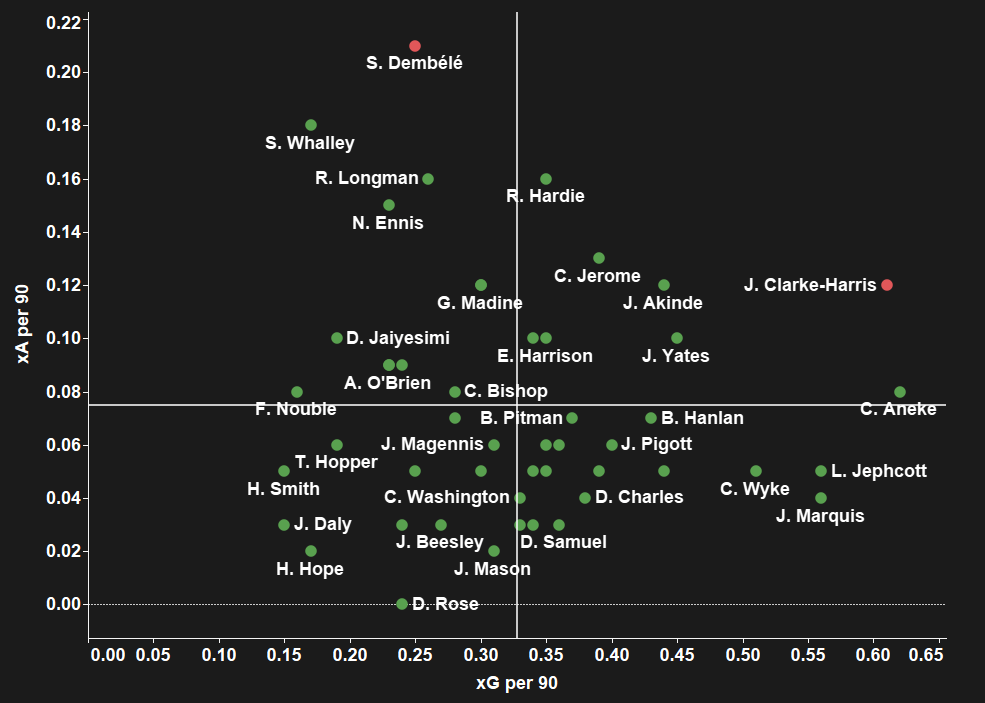
Starting in the #10 role with Szmodics, he acts like anything but a traditional #10. His role is much more of a second-striker who uses his smart movement to create opportunities for himself and others. He has also spent some time out in more of a winger role, but even then, the 25-year-old likes to drift inside and look to receive the pass inside the penalty area. Though, this does heavily predicate his game on his movement, and makes the forward somewhat one-dimensional, especially when we consider his lack of ability on the ball.
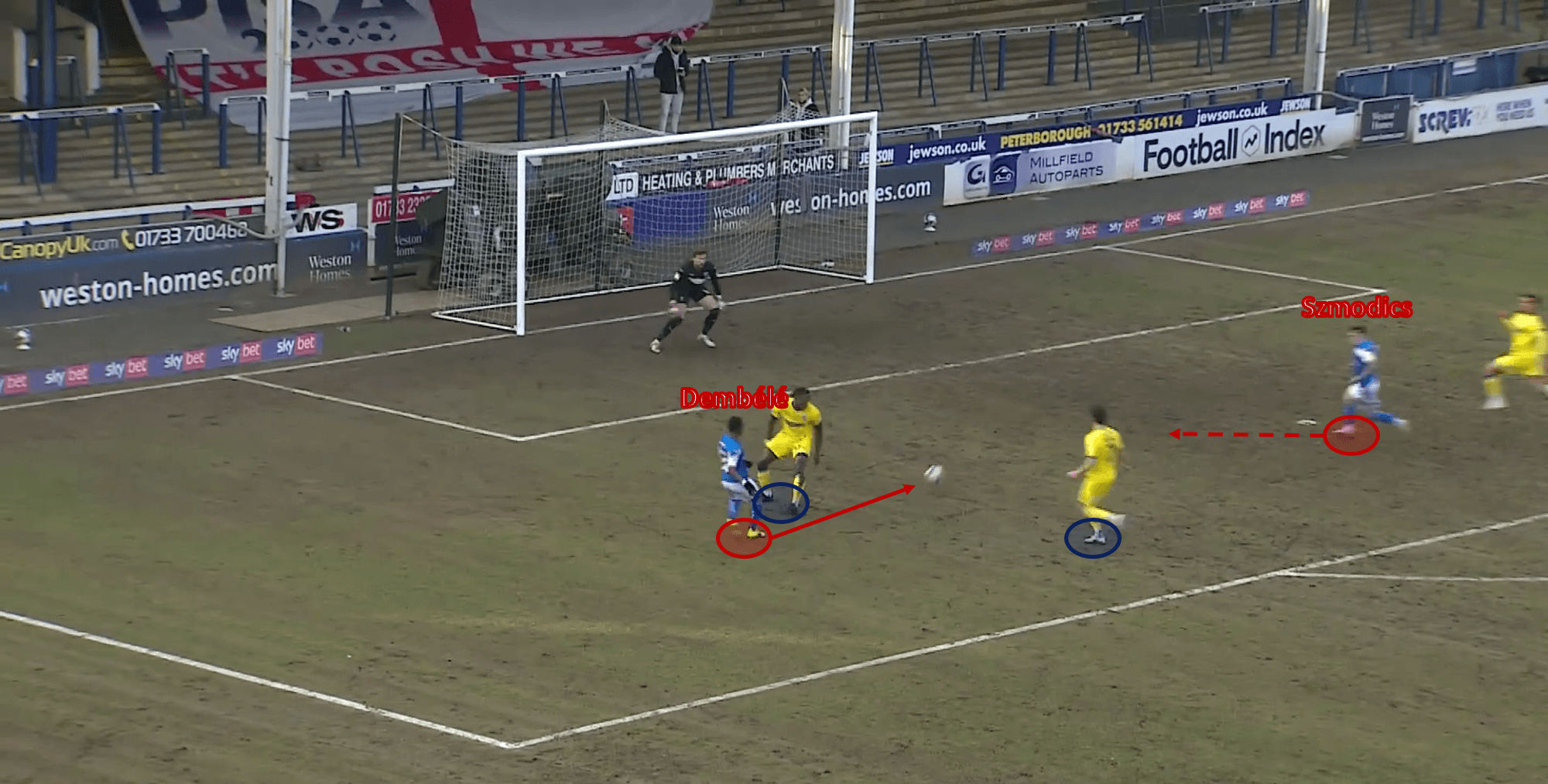
Szmodics times his run here to perfection. While the two Wimbledon defenders move towards Dembélé, Szmodics then makes that surging run into the box to score the goal.
Thankfully though, Szmodics’ runs can also be used as a disguise to create space for both Clarke-Harris and Dembélé. The intention of many Peterborough attack’s is to get the ball into the feet of Dembélé as soon as often. He is the player of true star quality in this side. This season he has used his excellent technical ability to great effect, driving at defenders who often just do not know how to stop him. He constantly leaves them flatfooted, and this season, he has been driving into dangerous areas because of it.
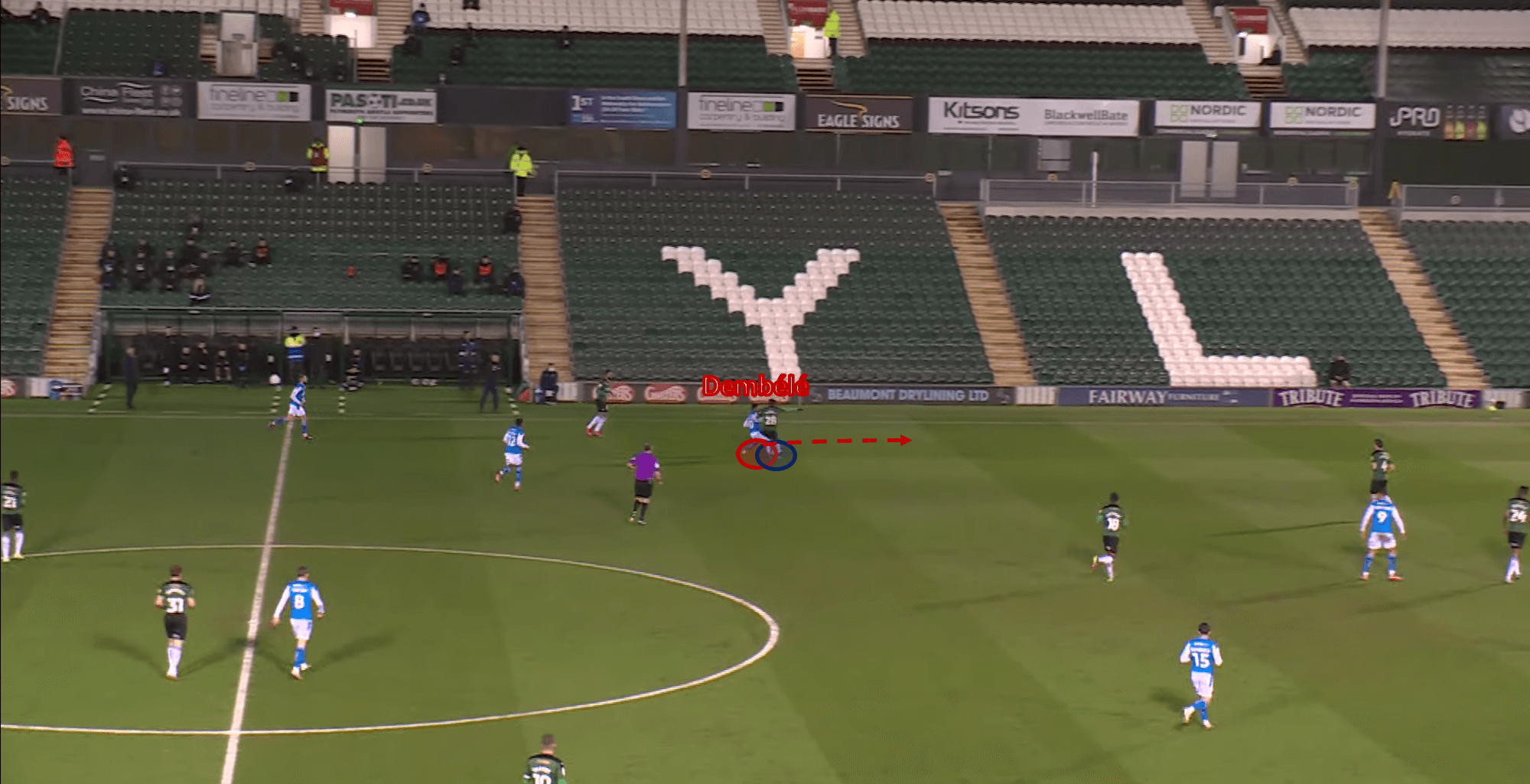
Dembélé can often touch the ball too far ahead of him, which leads to him sprinting back towards it to take it past another opponent, but it is still useful for ball progression.
As part of a striking partnership, to produce 3.3 dribbles per game is quite special, especially considering how many of these come from tight areas in and around the penalty area. Just how many of his shots and key passes come directly from a dribble is impressive. He likes to jink and feint his body one way, before bursting towards the other, and either providing a cutback or popping a shot off on goal himself.
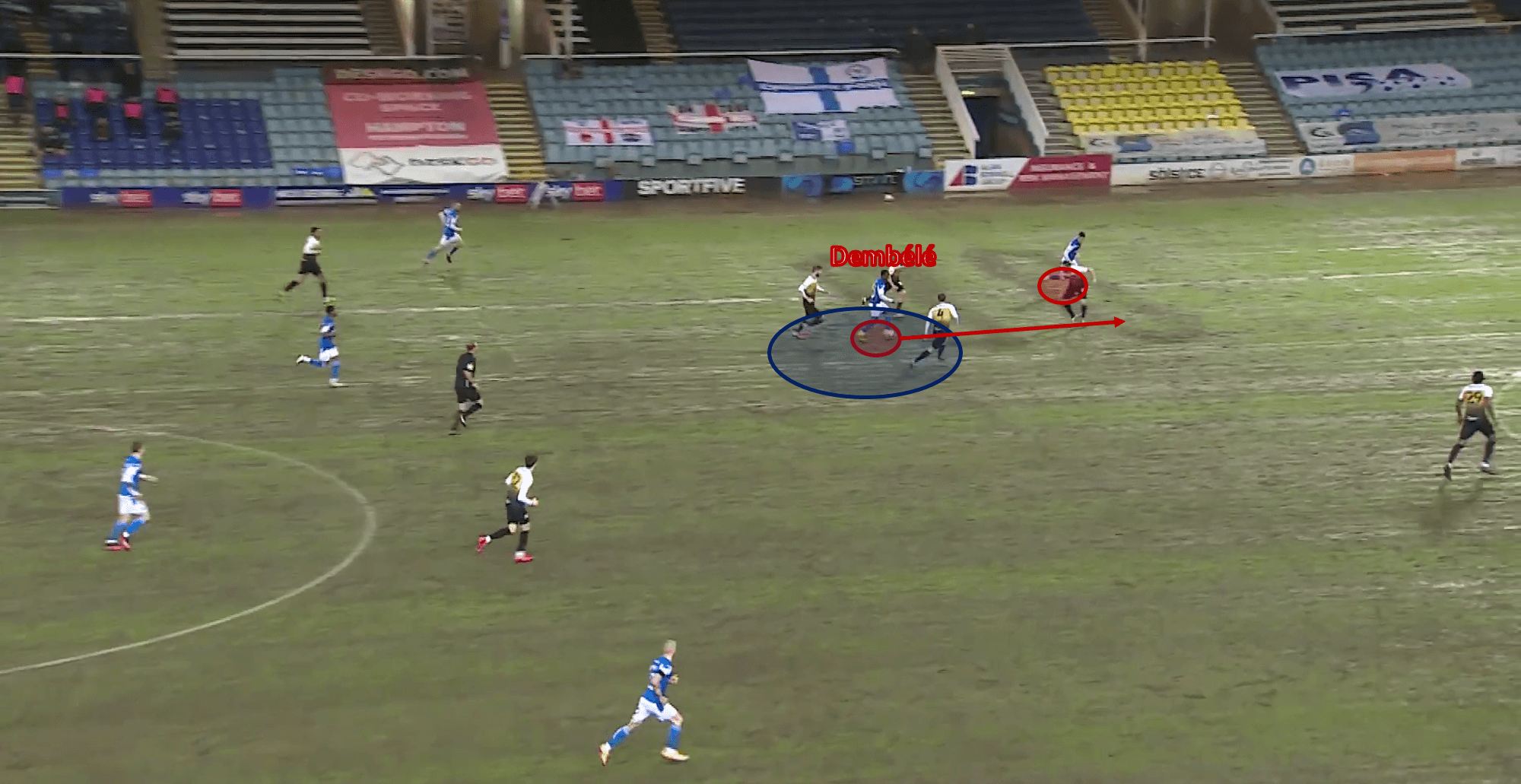
This is a perfect example of what makes Dembélé so useful. He draws all the attention to his location, before releasing the ball down the lane into Clarke-Harris.
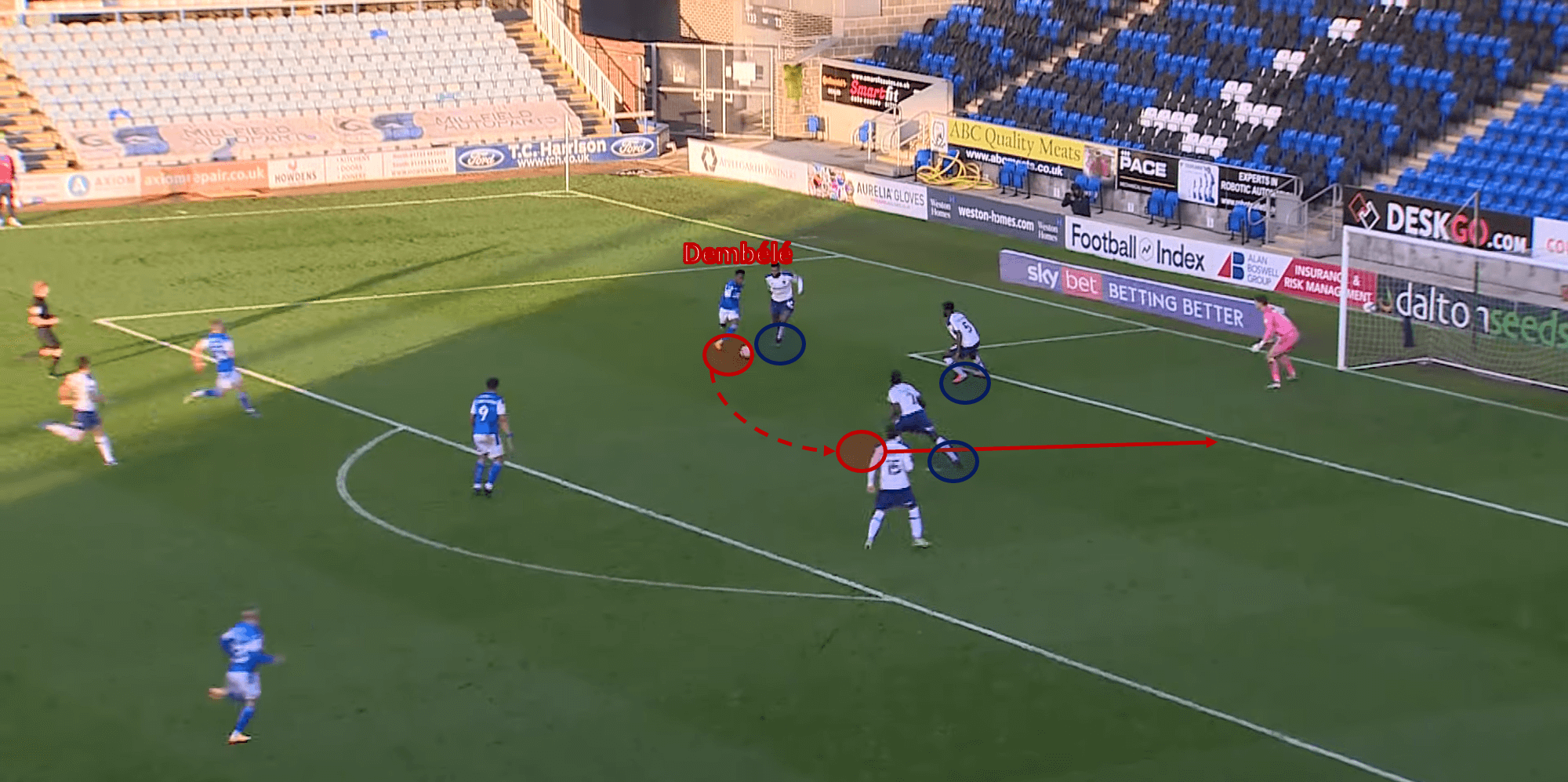
Inside the penalty area, Dembélé shows no fear. He takes it past several players and then calmly slots it into the bottom corner.
When it comes to Clarke-Harris, he is the focal point that Dembélé plays off of, while also getting into plenty of shooting opportunities himself. As mentioned earlier, when Peterborough go direct, Clarke-Harris is ever so important, as he uses his strong physical attributes to hold up the ball and wait for an on-running teammate. Outside of that, Clarke-Harris is a true poacher, who uses his excellent movement to its fullest. He is not the fastest player, but he is quick enough on the counter, and he does not need more than one touch to finish off an opportunity.
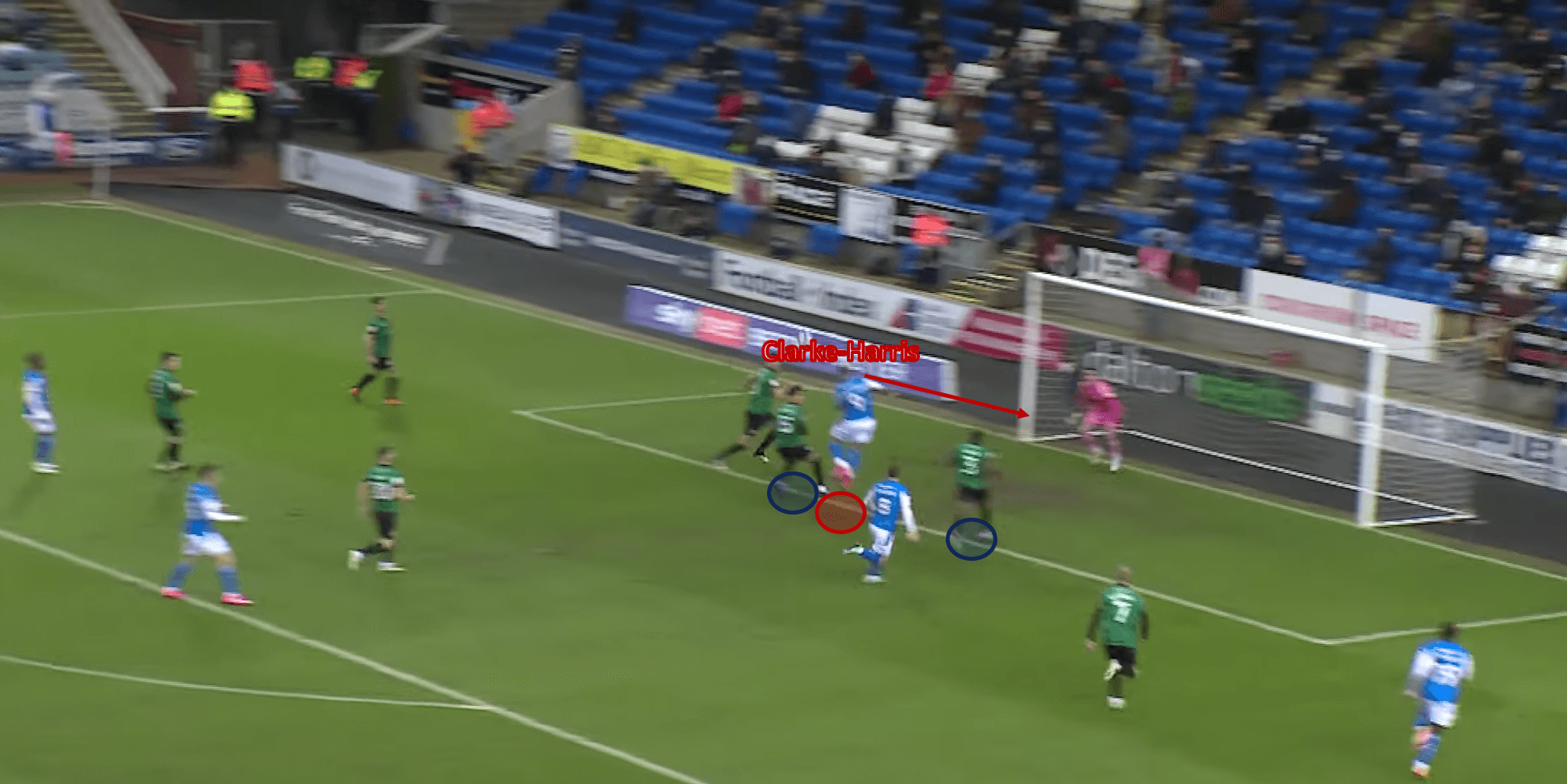
Here, Clarke-Harris shifts from one side of an opponent to another, before heading the ball into the bottom right.
Clarke-Harris has scored a variety of goals this season. 13 with his favoured left boot, 6 with his head, and 2 with his right, he does not shy away from any attacking situation. He has that all-important striker’s instinct which is hard to quantify through data. He has a sense of where to be and when inside the penalty area which leads to him ultimately taking so many shots per match, and inevitably scoring so many.
Conclusion
If Peterborough achieve promotion this season, it will be a tale of Ferguson improving as a coach. He has given his team options in shape, switching between different systems for different styles of opposition. His side can dominate possession, or they can play an equally effective counter-attacking style of play. He will often change the formation mid-game if something isn’t quite right, and it is a key reason how they have been able to win 7 games from a losing position this term.
Change in personnel during a match has also won Posh plenty of points too. Young winger Harrison Burrows has come onto the pitch on more than a few occasions in more physical games as a more direct option to ask questions of an opponent’s defence. Effectively though, as much as their defence has been rigid, this team will be remembered for some of their attacking stars, and rightly so. All three of them will go on to play at least Championship level, and probably even higher than that.





Comments